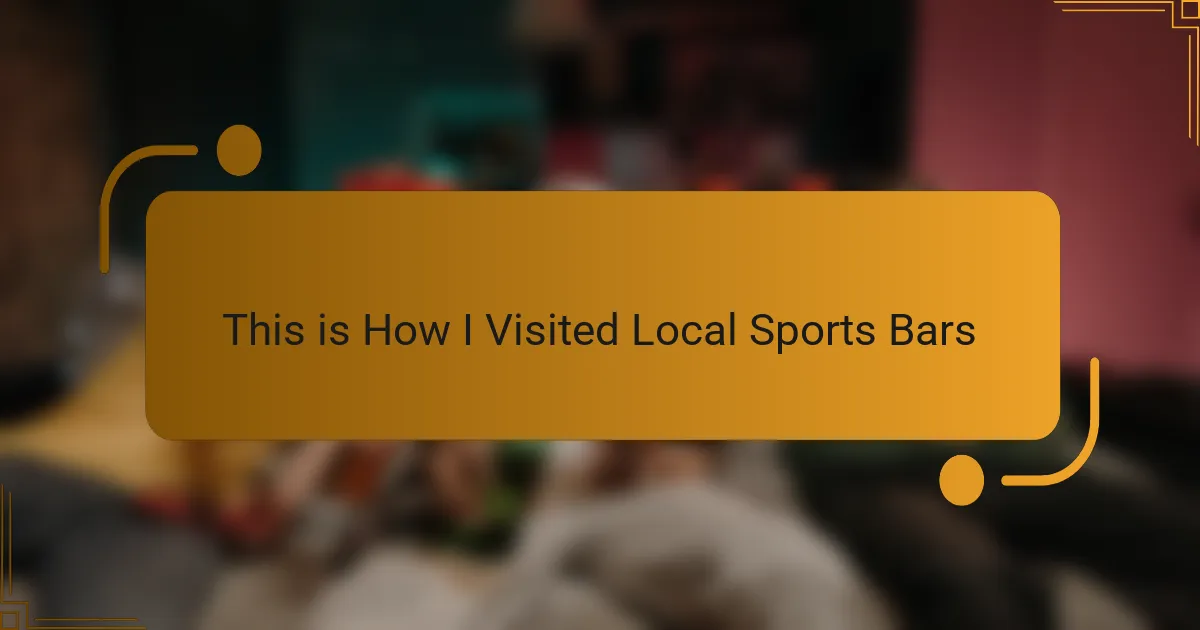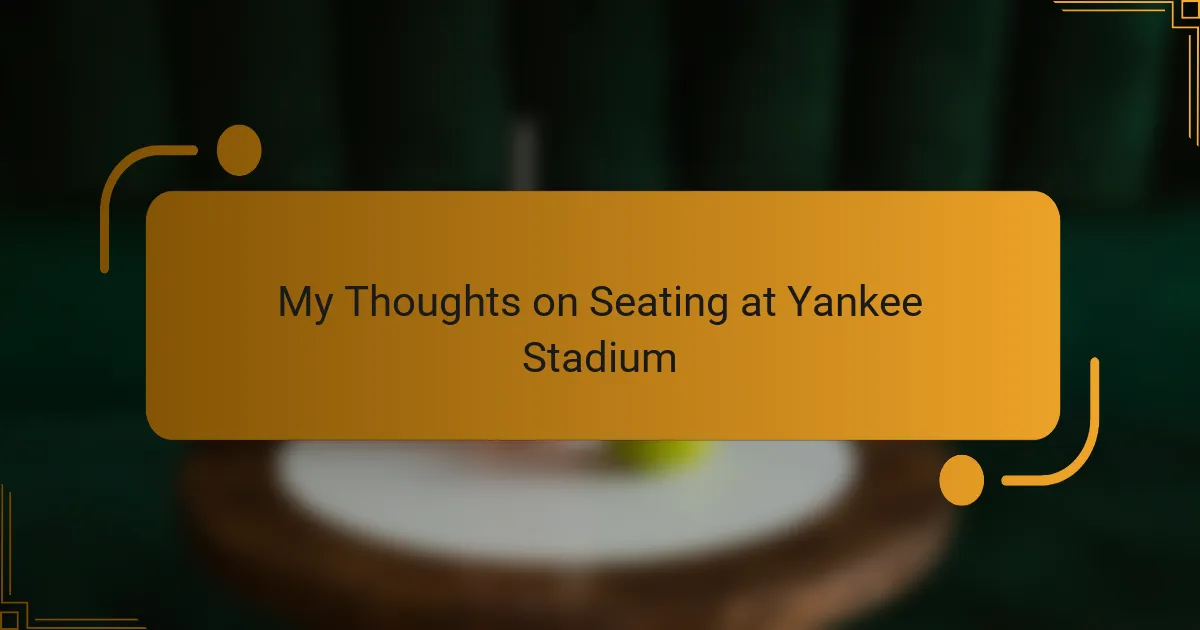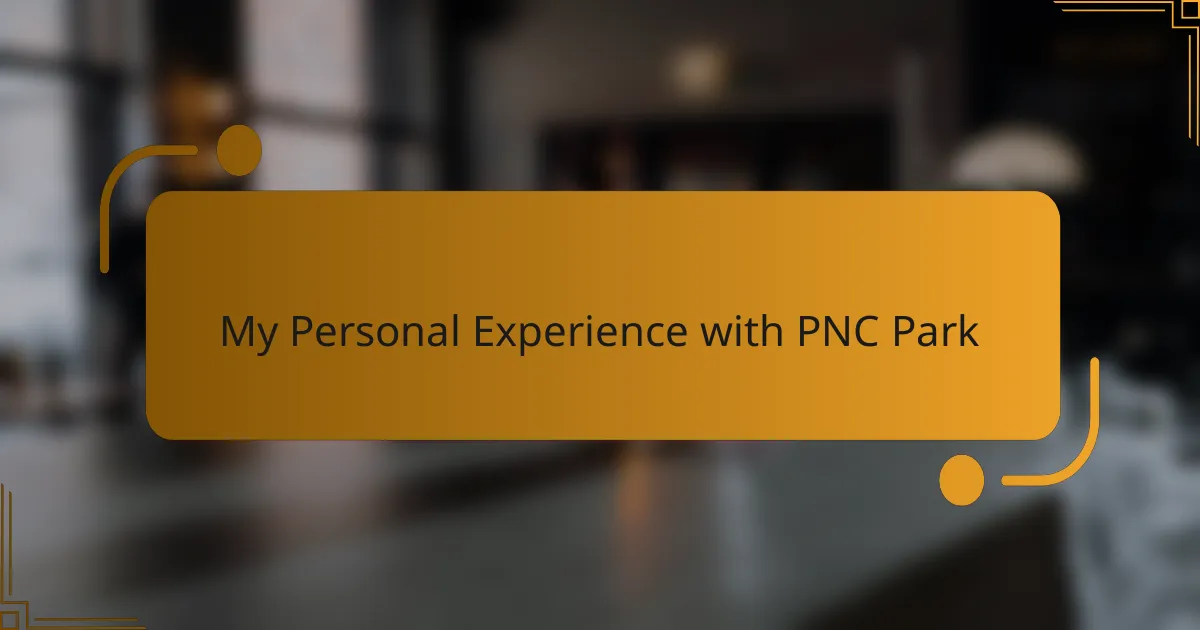Key takeaways
- Accessible sports bars enhance the experience through thoughtful design, including intuitive layouts, clear signage, and staff training that fosters an inclusive atmosphere.
- Wrigley Field showcases efforts for accessibility, particularly in seating for wheelchair users, but still faces challenges with navigation and older sections.
- Proactive staff assistance and small gestures, like offering larger print menus, significantly improve the overall experience for patrons with accessibility needs.
- Visiting early and familiarizing oneself with the venue layout can alleviate stress and enhance enjoyment during events like those at Wrigley Field.
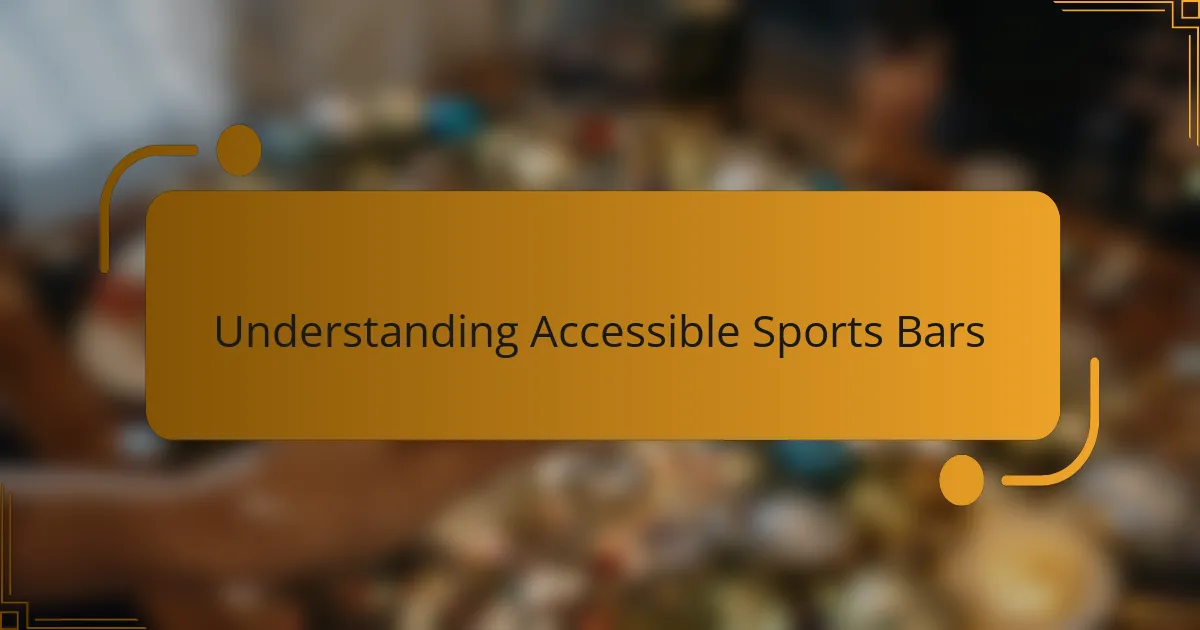
Understanding Accessible Sports Bars
Accessible sports bars aren’t just about ramps and wide doorways; they create an environment where everyone feels welcome and included. I remember walking into a place where I instantly noticed thoughtful features like adjustable seating and clear signage, and it made me realize how much these small details impact the overall experience. Have you ever wondered what it truly means to make a space accessible beyond the obvious physical adjustments?
For me, it’s also about atmosphere and ease of navigation. When a bar thoughtfully arranges tables to avoid cluttered paths or ensures staff are trained to assist without hesitation, it transforms a regular outing into something enjoyable and stress-free. These elements might seem subtle but they reflect a deep commitment to accessibility that goes beyond compliance.
It’s fascinating to see how some sports bars integrate technology, like menu apps that cater to visual impairments or hearing assistance devices. I asked myself, why isn’t this the standard everywhere? Experiencing these innovations made me appreciate just how much potential there is to make sports bars true community hubs for all fans.
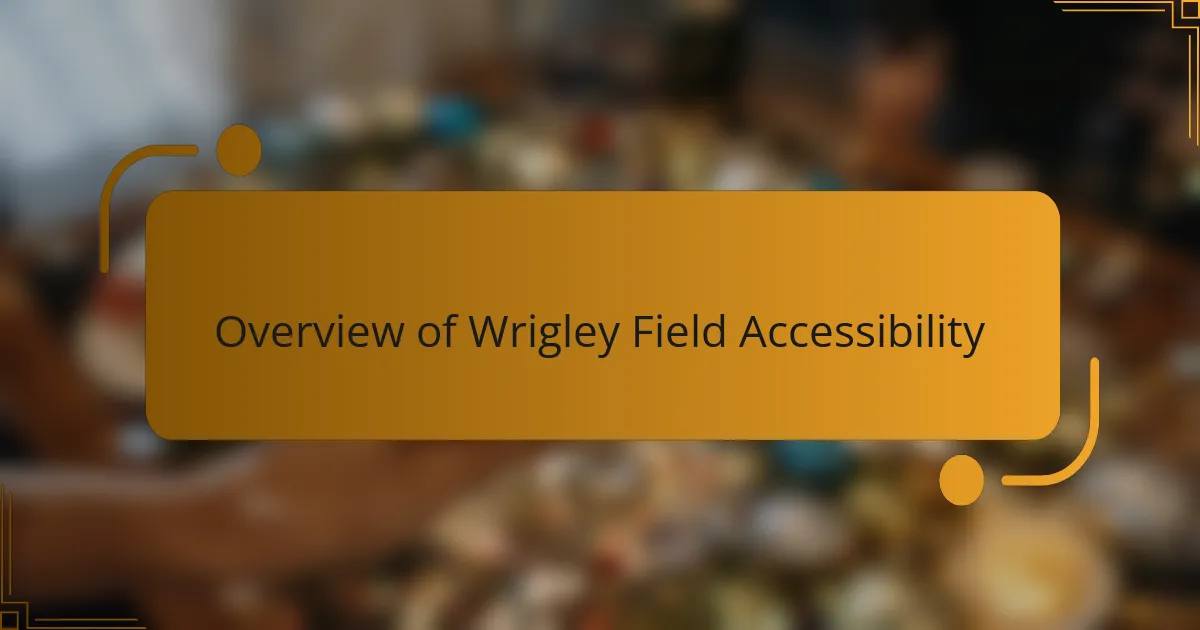
Overview of Wrigley Field Accessibility
Wrigley Field’s accessibility definitely caught my attention the moment I stepped in. It’s clear they’ve made efforts to accommodate fans with mobility challenges, with ramps and elevators strategically placed around the stadium. Yet, I couldn’t help but notice that navigating some of the older sections felt a bit tricky, which made me wonder how they balance preserving history with modern accessibility needs.
One thing that stood out was the seating options designed for wheelchair users. It wasn’t just about having space, but thoughtful sightlines and proximity to amenities that made a huge difference. I remember feeling genuinely included, not stuck in some out-of-the-way spot, which spoke volumes about their commitment to an inclusive fan experience.
Still, I found myself reflecting on the clarity of signage and staff awareness—elements that can make or break accessibility in a busy place like this. Have you ever been somewhere where you hesitated to ask for help? At Wrigley, I sensed the staff were prepared and willing, which gave me confidence to fully enjoy the game without stress.

Criteria for Accessible Sports Bars
One of the key criteria I look for in accessible sports bars is clear and intuitive layout. When I visited a few places where the pathways were wide enough and obstacles minimal, it made a huge difference in how comfortable I felt moving around. Have you ever felt frustrated trying to navigate through cramped spaces? That’s exactly why attention to spatial design matters so much.
Another thing that always stands out to me is accessible seating options that don’t isolate you from the crowd. It’s more than just having a wheelchair spot—it’s about positioning where you can enjoy the game without feeling sidelined. I recall sitting in one bar where my view was obstructed because the accessible seat was an afterthought, and it left me wondering why inclusivity can’t be seamless.
Lastly, staff training plays a surprisingly big role in accessibility. When employees know how to assist without making you feel uncomfortable or singled out, it creates an atmosphere of respect and ease. I remember a sports bar where the bartender intuitively offered menu options with larger print without me asking—it’s these considerate touches that really enhance the whole experience.
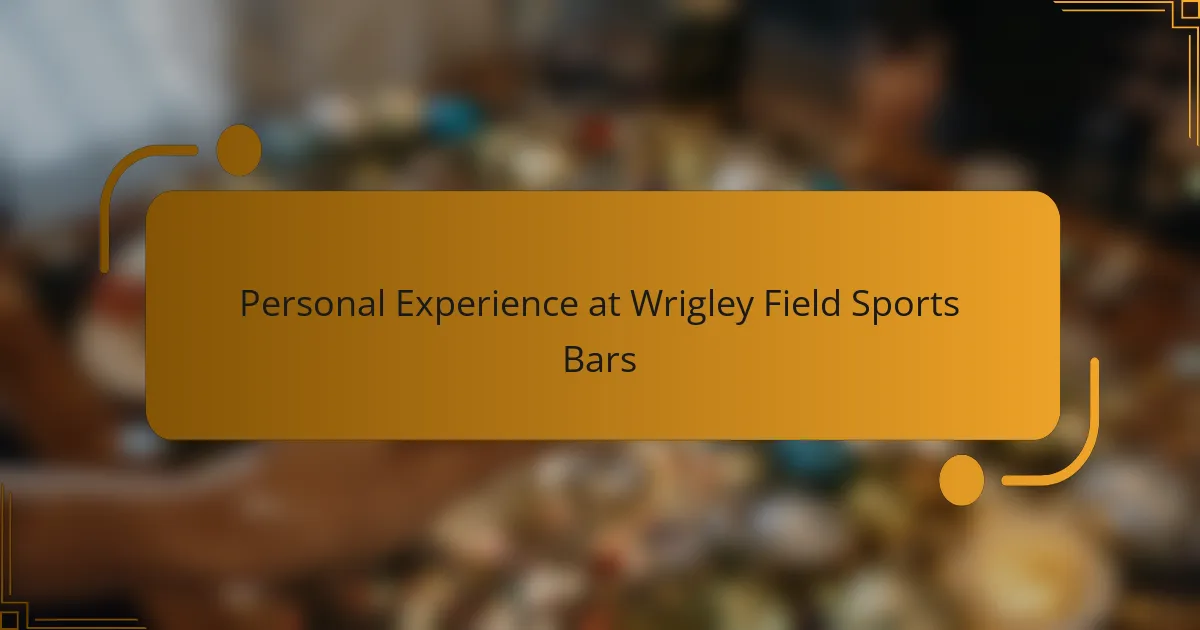
Personal Experience at Wrigley Field Sports Bars
Visiting sports bars near Wrigley Field, I quickly noticed how a few places got accessibility right, making me feel genuinely part of the action rather than on the sidelines. One bar arranged its booths so wheelchair users like me could easily join friends without awkward detours or cramped spaces. Isn’t that the kind of thoughtful design we all hope for but rarely find?
There was this one evening when I asked the bartender if they had menus in larger print, and without hesitation, she handed me one—and even pointed out the game highlights on their TV screens. That simple kindness changed the whole vibe for me, turning a casual visit into something warm and inclusive. Have you ever experienced that unexpected moment of genuine care that made you want to come back?
However, not every bar felt as welcoming. I remember stepping into a busy spot where narrow aisles and bad lighting made it hard to navigate, and staff seemed overwhelmed rather than attentive. It made me wonder how many good places miss the mark simply because they overlook these critical details that shape the real accessibility experience.
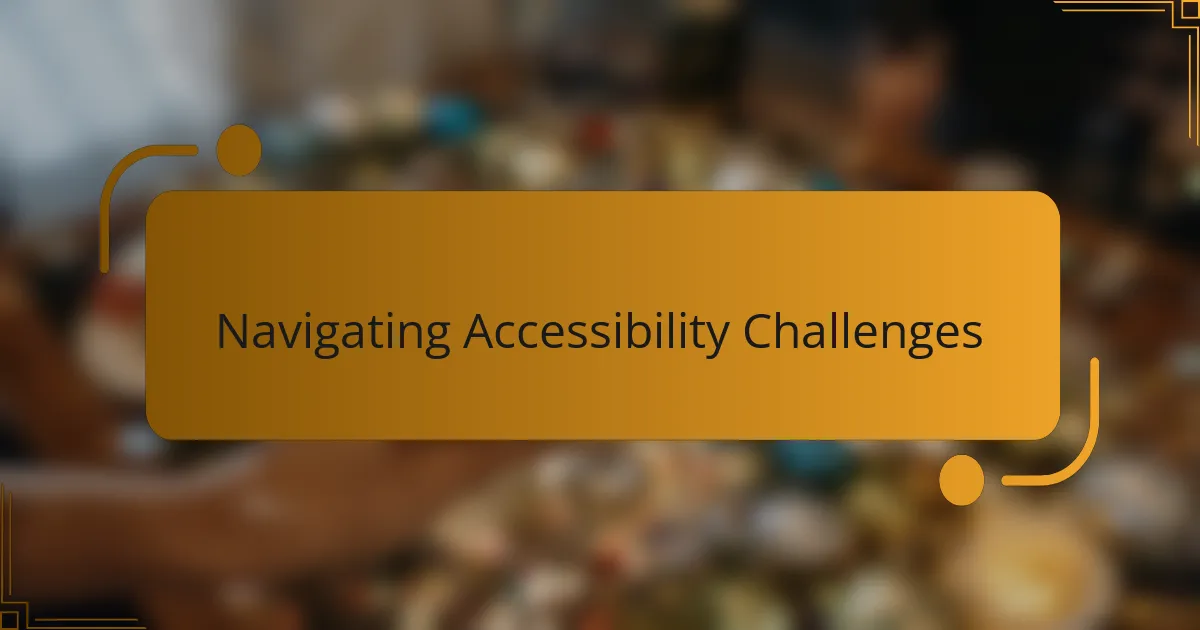
Navigating Accessibility Challenges
Navigating the accessibility challenges at Wrigley Field made me realize how easy it is for well-meaning efforts to fall short in the moment of actual use. I struggled myself on one occasion to find an elevator tucked away behind a concession stand, which left me feeling a bit frustrated and spotlighted in a crowded area. Doesn’t it make you think about how subtle signs and better placement could completely change that experience?
What struck me most was how unpredictable the terrain could be—some ramps were perfectly smooth, while others had uneven surfaces that tested my patience and balance. It’s a reminder that true accessibility isn’t just about ticking boxes but about anticipating the variety of ways people move through a space. Have you ever encountered a place where one small barrier made you question if it was worth staying?
Despite these hurdles, the willingness of staff to assist was a constant comfort. I remember one staff member who went out of their way to guide me personally to my seat after I mentioned my difficulty with the stairs. That level of personal attention didn’t erase the challenges, but it made them far more manageable—and that’s a difference any venue can strive for.
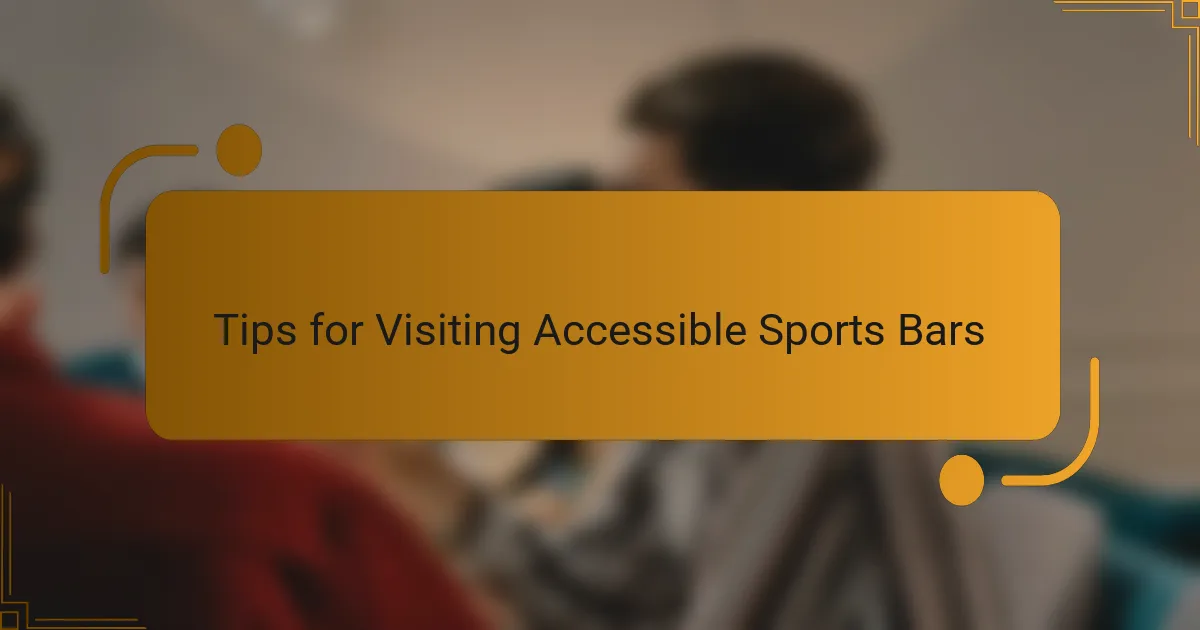
Tips for Visiting Accessible Sports Bars
One tip I always keep in mind is to call ahead and ask specific questions about accessibility. I once showed up at a sports bar expecting smooth entry, only to find out their elevator was out of service that day. Have you ever been caught off guard like that? A quick phone call can save you a lot of frustration.
Another thing I’ve learned is to scope out seating arrangements before settling in. In some places, accessible seats blend seamlessly with the rest, while others feel isolated. When I found myself stuck in a corner with a limited view, it made me appreciate how crucial it is for accessible seating to be thoughtfully placed—not just available.
Finally, don’t hesitate to interact with the staff. On several occasions, I was pleasantly surprised by how attentive and proactive employees were—in one bar, the bartender offered me a large-print menu before I even asked. Have you noticed how these small acts of kindness can instantly make the experience feel welcoming? It’s those moments that turn a good visit into a memorable one.

Recommendations for Wrigley Field Visitors
When visiting Wrigley Field, I’ve found that arriving early can make a world of difference. Not only does it give you time to navigate entrances and find your accessible seating without feeling rushed, but it also allows you to soak in the atmosphere before the crowd arrives. Have you ever felt stressed trying to maneuver through a packed stadium? Giving yourself that extra time really eases the whole experience.
Another recommendation I can’t stress enough is to familiarize yourself with the layout in advance. I remember pulling up a map of Wrigley’s accessible routes on my phone, which saved me from wandering around unnecessarily. Knowing where elevators and ramps are located turned what could have been a frustrating trek into a smooth, confident walk.
Lastly, don’t be shy about communicating your needs to the staff. At Wrigley, I’ve noticed that many employees are eager to help if you ask, whether it’s guiding you to concessions or explaining the best accessible entrances. Have you ever hesitated to speak up and later wished you hadn’t? From my experience, that simple conversation can change your entire visit for the better.
